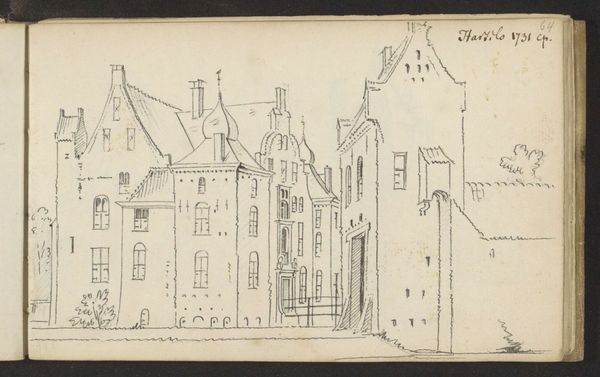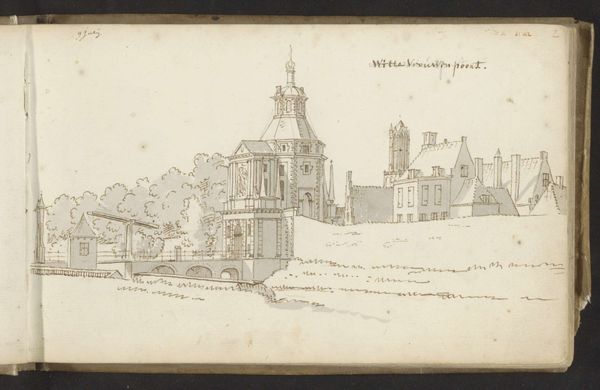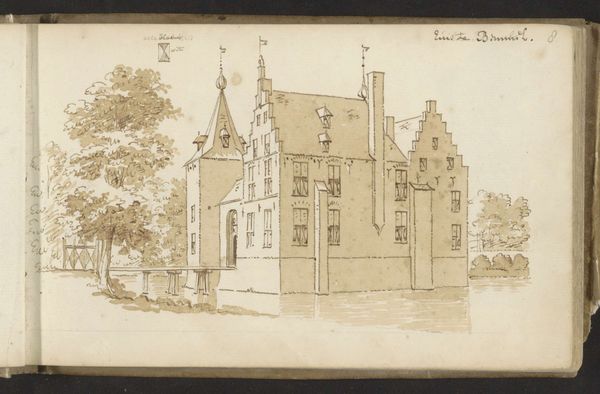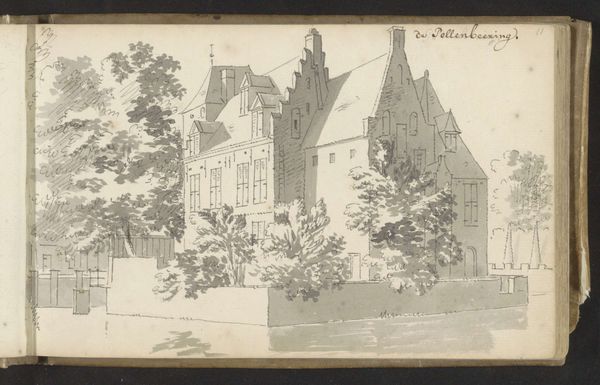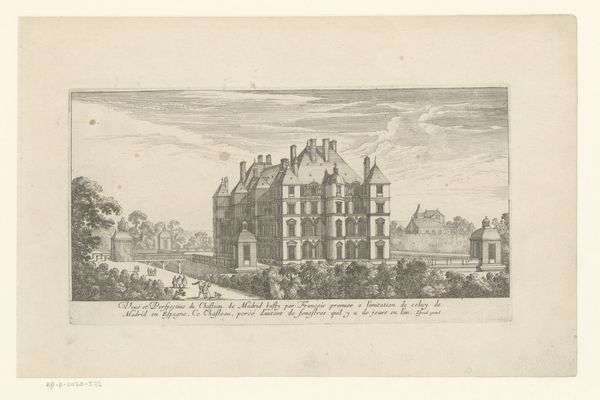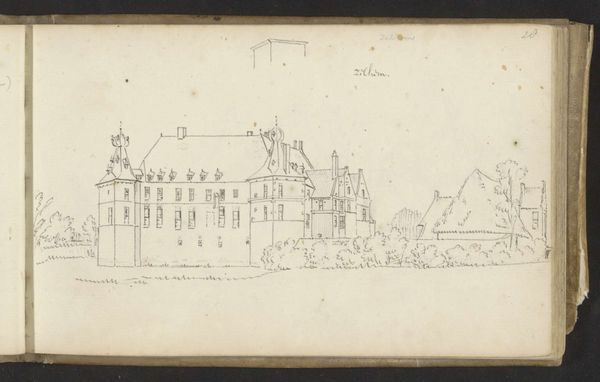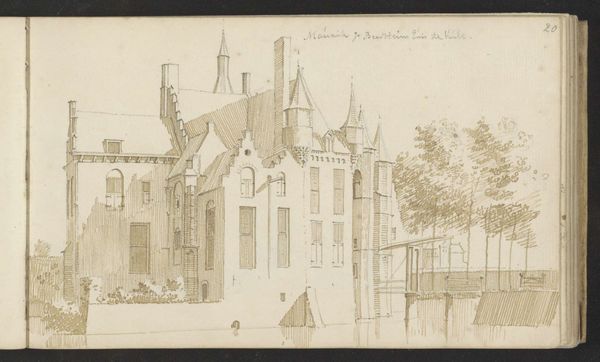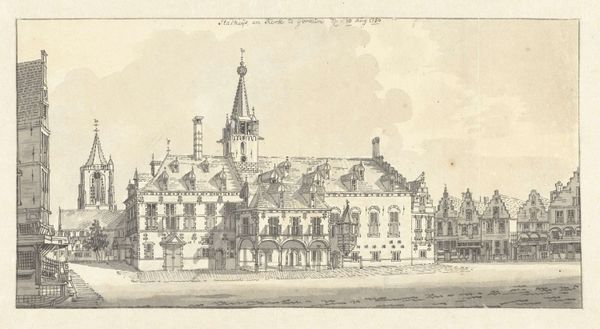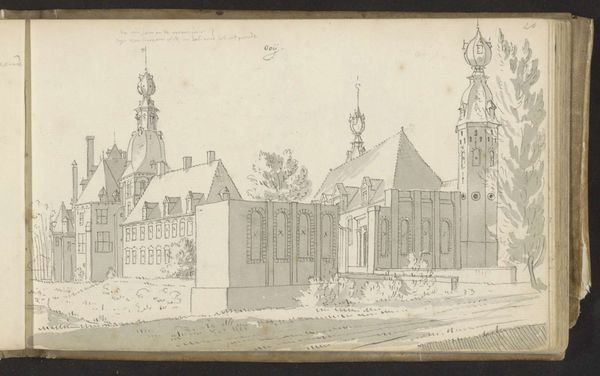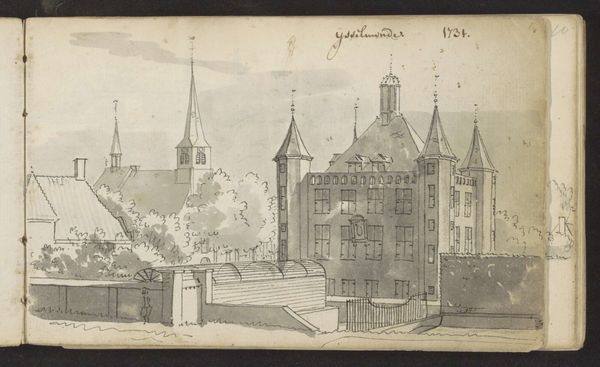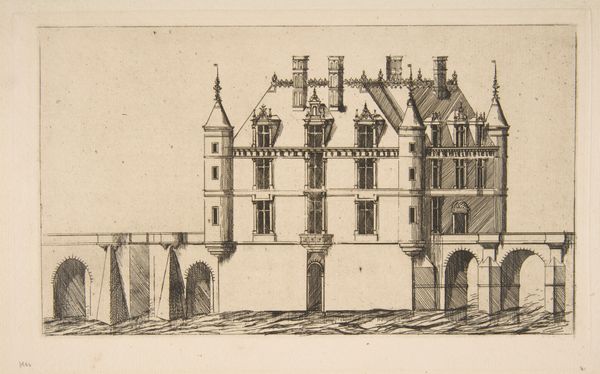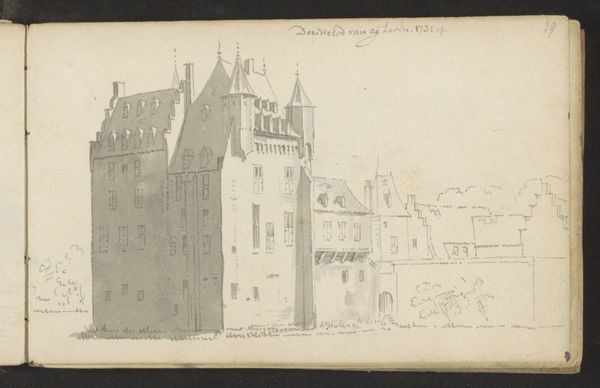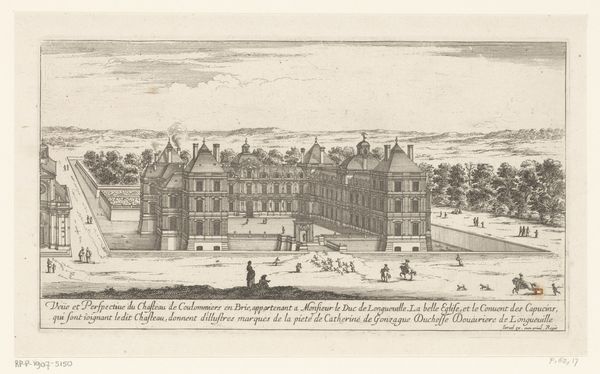
drawing, ink, pen, architecture
#
drawing
#
aged paper
#
baroque
#
dutch-golden-age
#
pen sketch
#
sketch book
#
personal sketchbook
#
ink
#
sketchwork
#
pen-ink sketch
#
pen work
#
sketchbook drawing
#
pen
#
cityscape
#
storyboard and sketchbook work
#
sketchbook art
#
architecture
Dimensions: height 128 mm, width 207 mm
Copyright: Rijks Museum: Open Domain
Editor: Here we have Cornelis Pronk's "Raadhuis te Grave," created sometime between 1701 and 1759 using pen and ink. It feels like a quick sketch from a personal sketchbook. The architecture is so detailed, even though the lines are simple. What catches your eye in this piece? Curator: What I find fascinating is how Pronk captures the essence of civic identity through this building. Consider the Dutch Golden Age, where cityscapes like this weren't just topographical records. They were statements of civic pride and power, subtly promoting the virtues of Dutch society to both internal and external audiences. Why do you think he chose this particular viewpoint? Editor: Perhaps he wanted to showcase the building's imposing facade and prominent position in the town square? To make a statement about stability and authority? Curator: Exactly. Think about the commissioning context too. Who would have wanted a drawing like this? Likely someone involved in the governance or a patron with an interest in celebrating their city. The existence of such images bolsters civic identity but also caters to a specific socio-economic class. Is it just a historical record or something more performative? Editor: So, it’s both a portrait of a building and a statement about the society that created it? I never considered how much a simple drawing could communicate about politics. Curator: Precisely. By examining art through the lens of history, we uncover these layers of meaning. This sketch speaks volumes about the societal values invested in public spaces. Editor: I'll definitely look at cityscapes differently now. Thank you for pointing out the layers beyond the aesthetic! Curator: My pleasure. It's about recognizing that even a seemingly simple sketch participates in complex social and political dialogues.
Comments
No comments
Be the first to comment and join the conversation on the ultimate creative platform.
